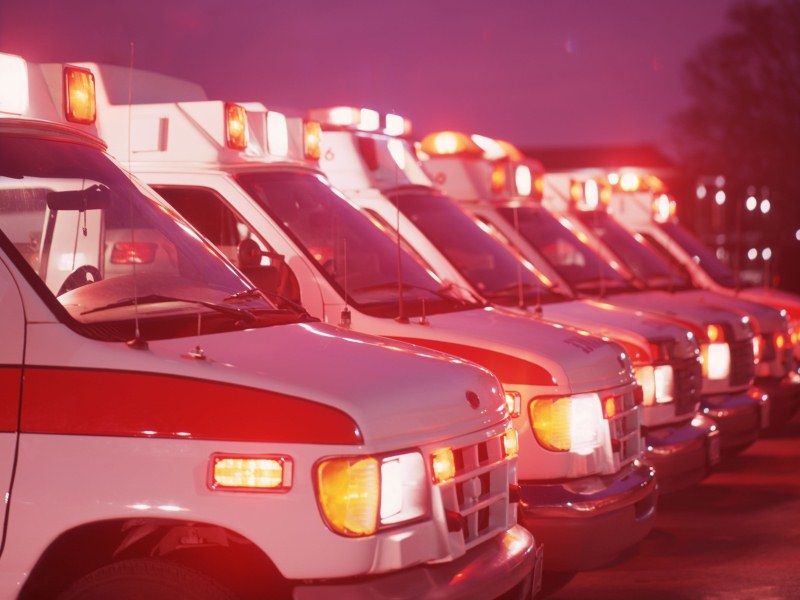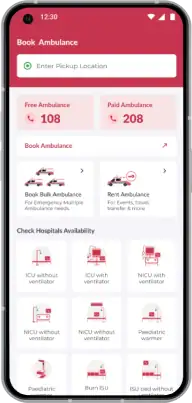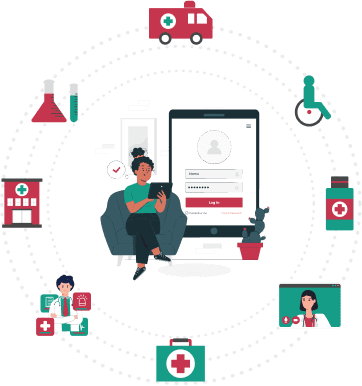In a country as large and populous as India, emergency medical services are crucial for saving lives and improving public health. One of the most important and successful emergency medical services in India is the 108 ambulance service, which operates in many states across the country. In this blog post, we'll explore the history, impact, challenges and future of the 108 ambulance service in India.
How 108 Ambulance Service Works in India
The 108 emergency response service in India is a free emergency service that provides transportation and medical care to people in need. The service is available 24/7 and anyone can call the toll-free number 108 to request an ambulance in case of a medical emergency. When a call is received, the nearest available ambulance is dispatched to the location of the caller. The ambulance staff consists of a driver, a paramedic and a doctor or nurse. The paramedic is trained to provide basic life support, while the doctor or nurse is trained to provide advanced life support. The ambulance is equipped with necessary medical equipment, such as a defibrillator, oxygen cylinder and first aid kit.
The History and Evolution of 108 Ambulance Service in India
The 108 ambulance service was first launched in the state of Andhra Pradesh in August 2005, in collaboration with the Emergency Management and Research Institute (EMRI). The service was later extended to other states and by 2010, it was available in 12 states across the country. Today, this service is available in 35 states and union territories of India, covering more than 75% of the population. The service has evolved over time to include innovations such as GPS tracking, video conferencing and mobile medical units.
Challenges and Solutions for the 108 Ambulance in India
Despite the success, this service faces several challenges in India. One of the biggest challenges is the lack of awareness and trust among the public. Many people are not aware of the service or do not trust it to provide timely and effective care. Another challenge is the shortage of trained staff and equipment, especially in rural areas. To address these challenges, the government and non-governmental organizations are working to improve public awareness and trust, increase staff training and recruitment and provide better equipment and infrastructure.
Success Stories and Impact of 108 emergency medical service in India
Despite the challenges, the 108 ambulance service has had a significant impact on public health in India. According to a study by the Indian Council of Medical Research, it has saved more than 14 million lives since its inception. The service has also reduced the time to reach a hospital in case of an emergency, from an average of 55 minutes to just 5-15 minutes. The service has been particularly effective in reducing maternal and child mortality rates, as well as deaths due to road accidents and heart attacks.
Training and Support for 108 Ambulance Service Staff in India
To ensure that the ambulance staff is well-trained and equipped to provide quality care, the 108 emergency service provides regular training and support. The staff is trained in basic life support, advanced life support and trauma care. They also receive training in communication skills, customer service and cultural sensitivity. The ambulance staff is also provided with regular refresher courses and on-the-job training to improve their skills and knowledge.
Future Directions and Innovations
The 108 ambulance service in India has been successful in saving lives and improving public health, but there is still room for improvement. Some of the future directions and innovations for the emergency service include:
- Adoption of advanced technologies such as telemedicine, artificial intelligence and drones to enhance emergency response and medical care
- Integration with other emergency services such as police and fire department to provide coordinated and efficient response
- Partnership with private sector companies to increase investment and innovation in the ambulance service sector
Importance of Public Awareness and Support for 108 Ambulance Service in India
Public awareness and support are crucial for the success and sustainability of this service in India. According to a survey, only 76.2% of the respondents were aware of the 108 emergency services. To improve public awareness and support, the following measures can be taken:
- Launching a nationwide public awareness campaign to educate people about the service and its benefits
- Building trust and confidence among the public by improving the quality and availability of the service
- Encouraging community participation and engagement in emergency response and care through initiatives such as community first responders and public-private partnerships
In conclusion, the 108 ambulance service in India has been successful in raising public awareness about emergency medical services. The survey conducted in Maharashtra, India, found that a significant percentage of respondents were aware of the 108 services, indicating the effectiveness of the service's outreach efforts. It has played a crucial role in providing timely medical assistance to people in need and has helped save numerous lives across the country. However, there is still scope for improvement, particularly in rural areas where access to emergency medical services may be limited. Overall, the 108 ambulance service is a vital aspect of India's healthcare system, and efforts should continue to be made to enhance its reach and effectiveness.






